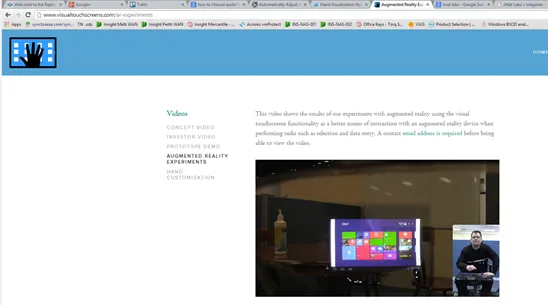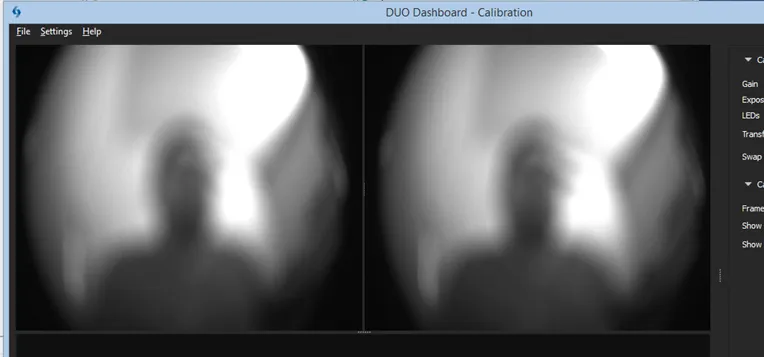July 2014 marked a strategic expansion of the Visual Touchscreens concept beyond tablets and displays. The month involved exploration of TV room applications, engagement with startup accelerator programs, and significant platform research.
Hardware Compatibility Challenges
Equipment was organized for demonstrations across different hardware: USB hubs for laptop connectivity, padded transport cases, and calibrated prototypes. However, getting the technology working on different machines presented unexpected challenges. The touch panel refused to function with an Acer laptop, even with the built-in capacitive screen disabled, forcing reliance on the dedicated mini PC for demonstrations. This highlighted the importance of testing across multiple hardware configurations.
The Visual Touch Remote Concept
A significant conceptual expansion emerged: applying visual touch technology to TV room scenarios as a universal remote replacement. The traditional TV room experience involves juggling multiple remotes for various devices—TV, set-top box, gaming console, streaming device—each with different button layouts and interaction models.
The Visual Touch Remote concept addressed this by providing a screenless input peripheral that worked with the TV as the primary display. Unlike a tablet with its own screen that could be taken elsewhere, this remote would be dedicated to the TV room experience. Users would interact with visual touch interfaces displayed on the TV screen itself, with their hand and finger positions shown as transparent overlays.
This approach offered several advantages:
- Users could focus on the main screen rather than looking down at a handheld device
- Touch interface concepts could be consistently applied across all TV room devices
- Virtual controls eliminated the need for physical buttons, enabling more intuitive interfaces
- Fine manipulation would be possible since fingers wouldn’t obscure touch points
Documentation was created articulating these concepts, including detailed system architecture diagrams showing how the visual touch remote would integrate with TVs, set-top boxes, gaming consoles, and other media devices.

HDMI Video Overlay Research
Implementing the TV remote concept required solving a technical challenge: overlaying visual touch interfaces on existing HDMI video streams from multiple sources. This led to intensive research into video mixing and augmentation hardware.
Professional video mixers were impressive but targeted end-user professionals rather than developers creating prototypes. Consumer solutions like streaming boxes and Android devices lacked the performance and multiple input support needed. The search led through various options:
- FPGA-based boards like the Digilent Atlys Spartan-6
- The Chumby NeTV developer platform for post-processing HDMI video
- Digital signage solutions focused on keying and content augmentation
- InAir’s augmented television product as a relevant commercial example
Each research path revealed both the technical feasibility and the specialized knowledge required to implement HDMI video overlay systems.


Startup Accelerator Engagement
The Curtin Ignition startup program emerged as a potential support resource. After researching the program structure and attending an informational seminar, the decision was made to pursue application. Startup accelerators offered mentorship, connections, and structured support that could complement the technical development work.
Conversations with advisors like Farhad Fozdar from the Innovation Centre of WA provided valuable perspective. Questions about how visual touch compared to screen mirroring from tablets led to refined articulation of the value proposition. The paperwork and preparation for accelerator programs became another dimension of moving from pure R&D to commercialization.
Platform and Patent Research
Parallel research threads continued throughout the month. The Harmony remote was investigated as a relevant existing solution to the multi-remote problem. Microsoft patents related to depth scanning were reviewed—finding similar but later-dated patents actually validated the innovation direction while those patents focused on different applications.
The Structure Sensor delivery status was monitored. ARM boards from Radxa were investigated as potential platforms for vision system prototyping. Each research thread explored possibilities for future development or competitive landscape understanding.
Strategic Clarity
A significant outcome from July was crystallizing the ecosystem vision. Visual touch concepts could apply consistently across tablets, phones, TVs, meeting rooms, desktops, and augmented/virtual reality. This consistency represented value for both users and platform vendors. Operating system makers could offer unified tools and experiences across all these interaction contexts.
The month demonstrated the challenge and opportunity of technical innovation: proving feasibility is only the beginning. Articulating value propositions, preparing for accelerator programs, researching adjacent technologies, and planning product variants all became necessary parallel workstreams. The path from working prototype to market success required capabilities beyond pure engineering.